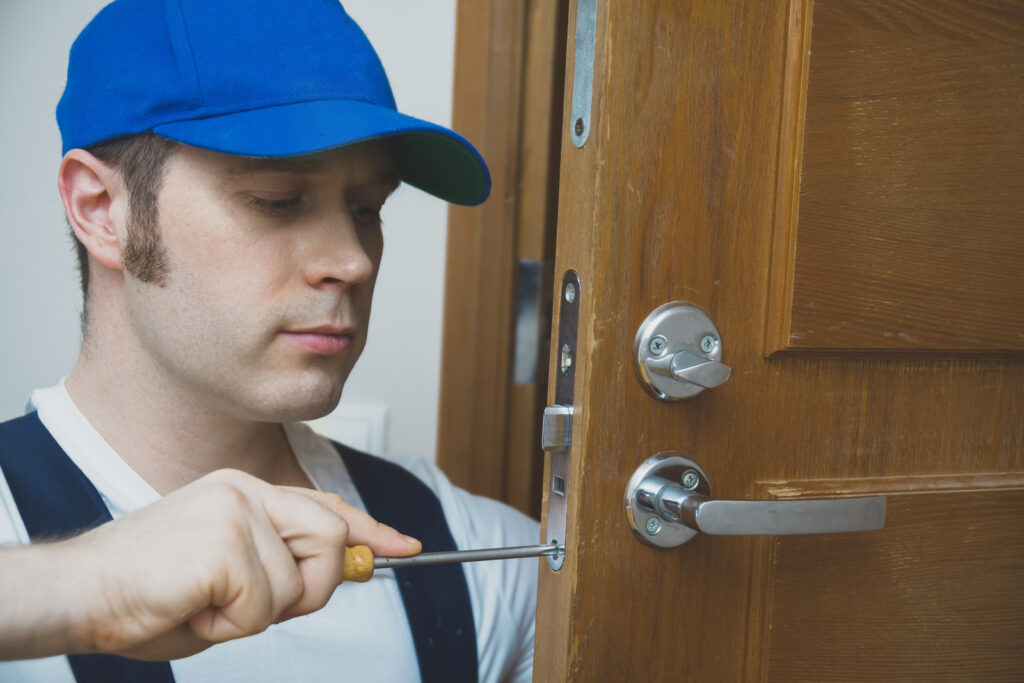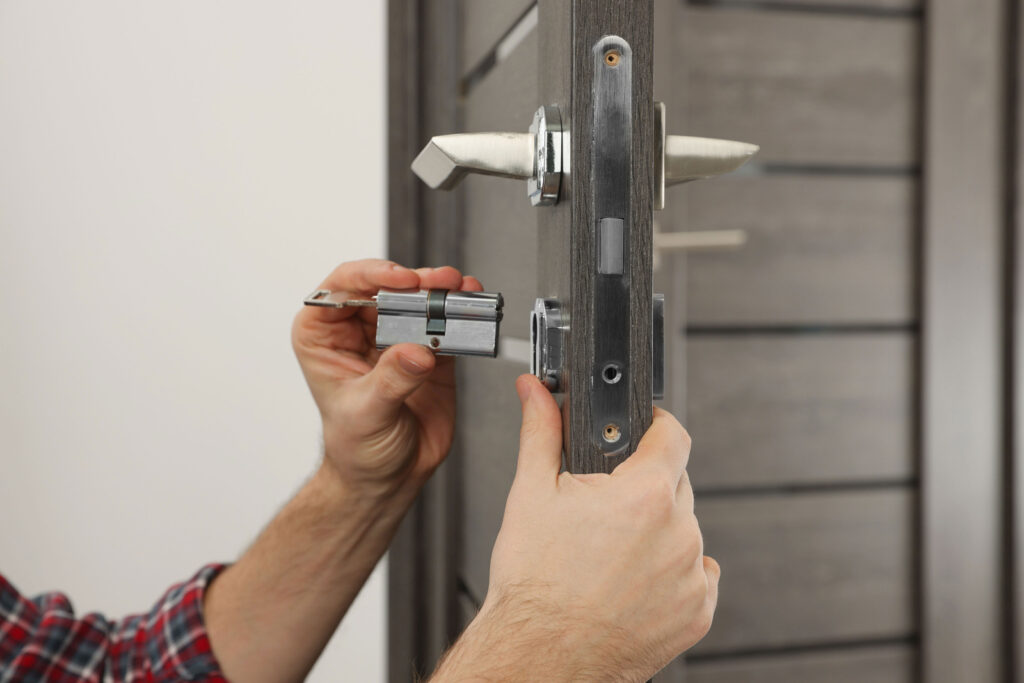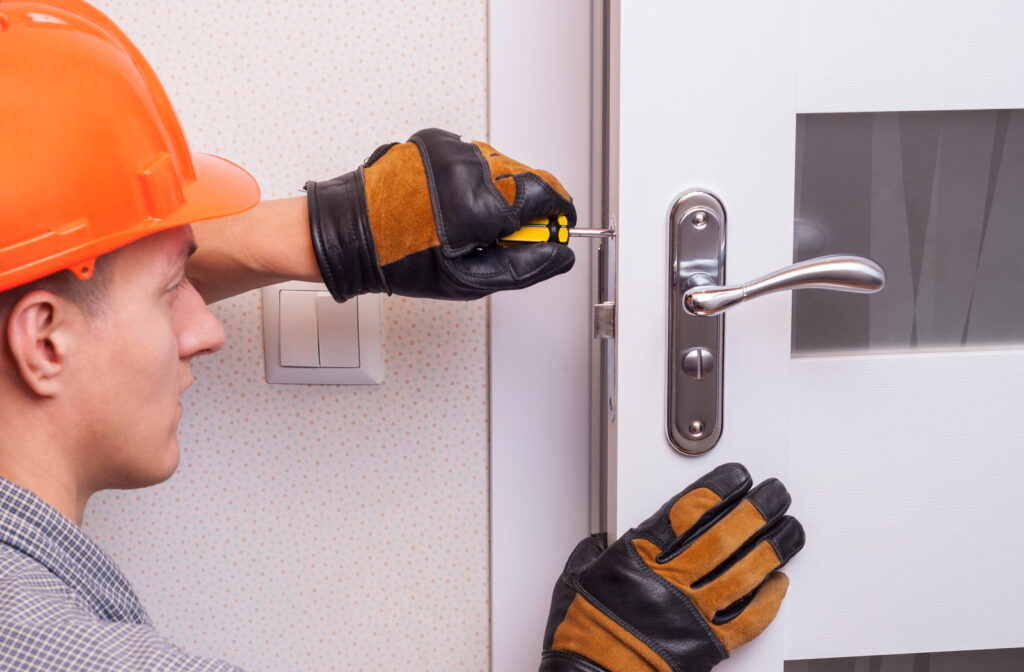
In the realm of home security, key control is a fundamental aspect of safeguarding our most cherished spaces. It’s not just about having a key to a door, but rather controlling who has access to what lies beyond it. Imagine a world where keys remain unchanged, and their secrets are accessible to anyone who might come into possession of them. In this scenario, security becomes a fleeting concept, and homeowners are left vulnerable to many risks.
In this blog, we delve into the critical necessity of regular lock change, shedding light on why this simple act is pivotal in fortifying the sanctity of our homes. Regular lock changes are essential in ensuring peace of mind in an ever-evolving landscape of security threats.
Locked In Danger: The Security Risks of Neglecting Regular Lock Change
Regularly changing the locks of your home is vital to maintain the security of your property. Failing to change them regularly can put you at significant risk, and here are some key points to consider:
Increased Vulnerability to Break-ins: Keys can be lost, stolen, or duplicated without your knowledge, which can provide unauthorized access to your home. By not changing the locks on a regular basis, you may never know who has access to your property, leaving you vulnerable to theft and break-ins.
Compromised Previous Residents: If you’ve moved into a new home or apartment, it is crucial to replace the locks as soon as possible. Even if the previous owners or tenants returned all their keys, there’s no guarantee they didn’t make extra copies for themselves or others, leaving your home vulnerable to intrusion from individuals who may still possess keys from the previous occupants.
Wear and Tear: Locks undergo wear and tear over time, compromising the effectiveness of the lock mechanism. Old or worn-out locks are easier to pick or force open, making your home an easier target for burglars.
Outdated Security Technology: Older locks may need more security features to withstand modern burglary techniques. Burglars can bypass traditional locks with ease, making upgrading to newer, more secure models essential. Regularly changing your locks allows you to stay ahead of potential security threats by embracing the latest advancements in lock technology.
Maintaining Control: Regularly changing your locks gives you greater control over who has access to your home. Whether it’s former tenants, contractors, or acquaintances who’ve had access in the past, changing locks ensures that only authorized individuals can enter your property. This level of control is vital for maintaining the security and privacy of your home and family.
By prioritizing regular lock changes, homeowners can bolster their security measures and safeguard against potential threats.

Unlocking Disaster: The Potential Risks of Lost or Stolen Keys
Losing or having your keys stolen can be a nightmare scenario for any homeowner. It presents several immediate and long-term security risks that you should be aware of. Here’s an overview of the risks that come with lost or stolen keys:
Immediate Threat of Unauthorized Entry: When your keys go missing, there’s an immediate risk of someone gaining unauthorized entry to your home. If the keys were stolen with malicious intent, the thief could use them to enter your property without your knowledge.
Risk of Burglary: A lost or stolen key provides burglars with a convenient and inconspicuous means of entry. Burglars may take advantage of this vulnerability, especially if they think that the keys belong to a home with valuable possessions.
Compromised Safety of Residents: Besides the risk of burglary, lost or stolen keys compromise the safety of the occupants within the home. If an unauthorized individual gains access to the property, they may threaten the safety and well-being of the residents.
Potential for Key Duplication: If your keys are lost or stolen, they could be duplicated without your knowledge. Key duplication services are readily available, and unscrupulous individuals may use lost keys to make unauthorized copies. These copies could then be used to access your home later, even after you’ve changed the locks.
Loss of Peace of Mind: Beyond the immediate security risks, the loss or theft of keys can also have a significant psychological impact on homeowners. Restoring peace of mind often requires proactive steps to address the situation and enhance home security measures.
By promptly addressing the issue and implementing appropriate security measures, homeowners can mitigate the risks associated with lost or stolen keys and safeguard their homes and families.
Unauthorised Entry Prevention: Safeguarding Your Property
Protecting your home against unauthorized access is crucial for ensuring the safety and security of your property and loved ones. To achieve this objective, it’s essential to take proactive measures that can help you prevent unauthorized individuals from gaining access to your home. Here are some effective strategies that you can implement to safeguard your home against unauthorized access:
1. Regularly Change Locks: Changing the locks regularly is a crucial step in maintaining control over who has access to your home. This practice can prevent unauthorized individuals from using stolen, lost, or duplicated keys to gain entry. Updating your locks periodically can enhance your home’s security and reduce the risk of unauthorized access. It’s also essential to install tamper-resistant locks to improve security.
2. Implement Smart Locks: Smart locks provide advanced security features that can enhance protection against unauthorized access. These technologically advanced locks can be remotely controlled and monitored via smartphone apps, allowing you to lock and unlock doors, grant temporary access to visitors, and receive real-time alerts about suspicious activity. Smart locks also enable you to track entry and exit logs, providing valuable insights into who is accessing your home and when.
3. Secure Windows and Entry Points: Windows and other entry points are common targets for burglars seeking unauthorized access to a home. Ensure all windows have sturdy locks or security bars to prevent forced entry.
4. Enforce Access Control Measures: It’s essential to provide spare keys only to trusted family members, friends, or neighbors. Avoid hiding keys in predictable or easily accessible locations outside your home. Consider installing keyless entry systems or keypad locks to eliminate the need for physical keys, further reducing the risk of unauthorized access.
5. Maintain Vigilance and Awareness: Stay vigilant and maintain awareness of your surroundings to identify and respond promptly to any signs of unauthorized access or suspicious activity. Encourage neighbors to report unusual behavior or unfamiliar individuals loitering near your property. By remaining proactive and alert, you can effectively deter potential intruders and protect your home from unauthorized access.
By implementing these proactive security measures, homeowners can effectively protect against unauthorized access and enhance the overall security of their properties. Remember that investing in home security is an investment in peace of mind and the safety of your loved ones.

Optimal Lock Change Frequency: A Guide for Homeowners
Determining how often to change your locks is important for maintaining optimal home security. Although there is no one-size-fits-all answer, some best practices can help homeowners establish an appropriate schedule for lock changes:
- Evaluate your unique risk factors to determine how frequently you should change your locks. Properties in high-crime areas or those with frequent turnover of tenants may require more frequent lock changes.
- Incorporate lock changes into your regular home maintenance schedule. Consider changing locks annually or biennially as part of routine upkeep tasks.
- Some life events require immediate lock changes to mitigate security risks. Examples include moving into a new home or apartment, experiencing a break-in or theft, or undergoing a separation or divorce.
- For added security, consider upgrading to electronic or smart locks with advanced encryption and authentication mechanisms.
- Regularly inspect the condition of your locks to identify signs of wear, damage, or tampering. If you notice any issues, such as loose components, rust, or difficulty operating the lock, consider replacing it promptly.
- Stay informed about emerging security threats and trends to adapt your lock change frequency accordingly. Periodically reassess your security needs and adjust your lock change frequency to address evolving threats.
- Seek guidance from security experts or locksmiths to assess your home’s security needs and determine the most suitable lock change schedule.
Remember that prioritizing home security is essential for safeguarding your property, belongings, and loved ones.
Conclusion :
Prioritizing key control by regularly changing locks is essential for homeowners who want to maintain optimal home security. By being aware of the risks associated with outdated or compromised locks, we empower ourselves to take proactive measures to safeguard our homes and loved ones. Regular lock changes can help mitigate the threat of unauthorized access, prevent burglary, and provide peace of mind. Therefore, it is undeniable that there are many benefits of regular lock changes. To fortify your home against potential threats, embrace the power of key control and make regular lock changes an essential part of your security routine.
Are you ready to prioritize your home’s security? Take the first step towards creating a safer living environment today. Contact My Mobil Locksmith services to assess your current lock situation and schedule a lock change if necessary.